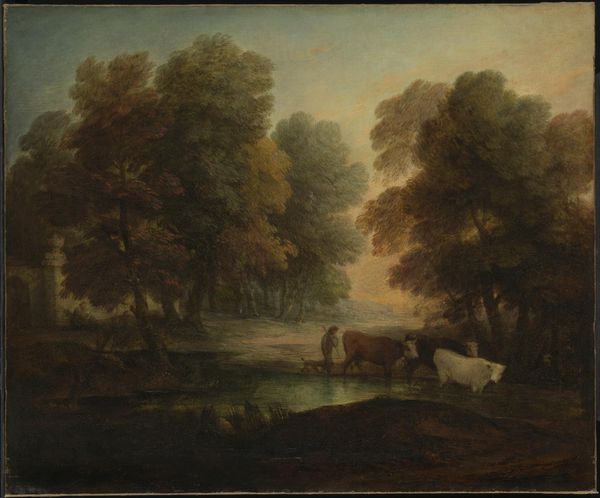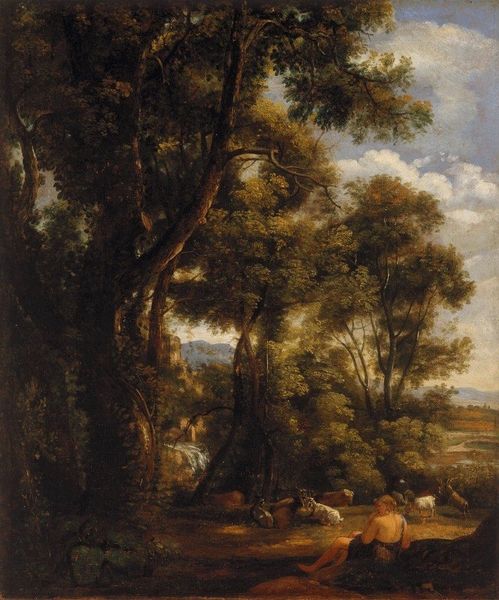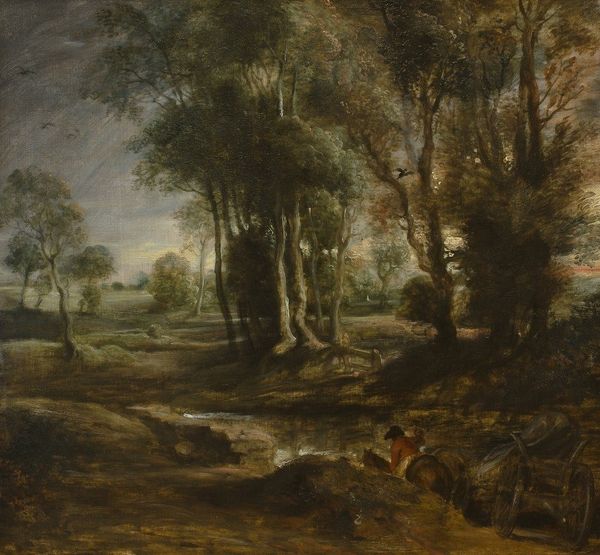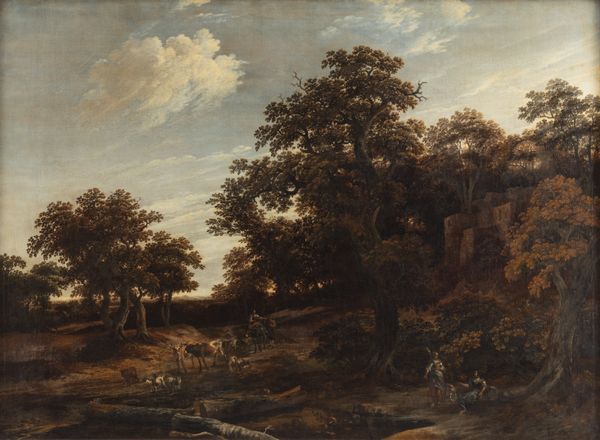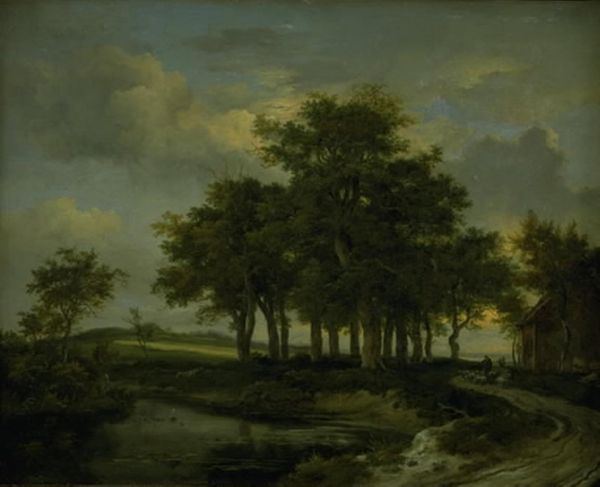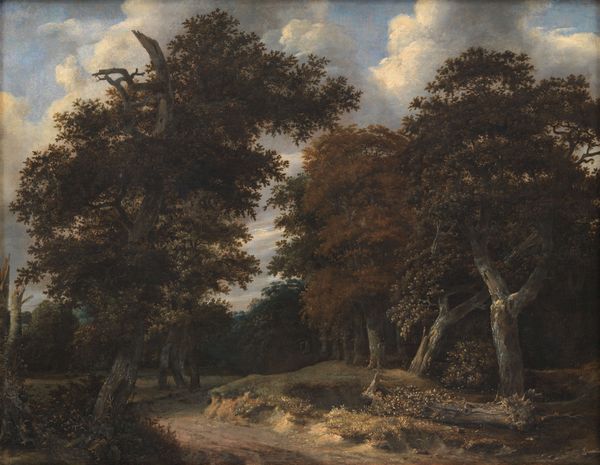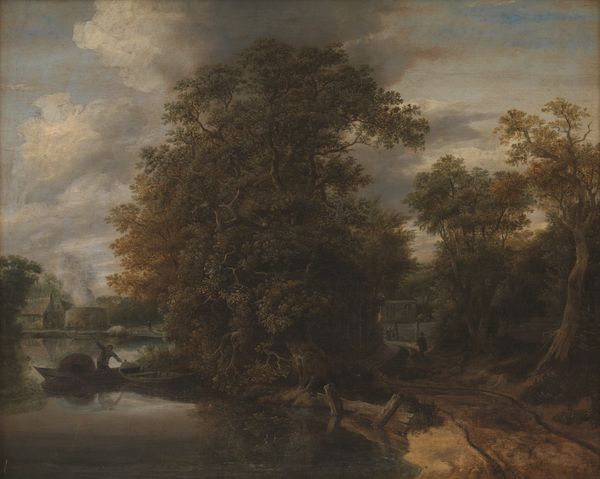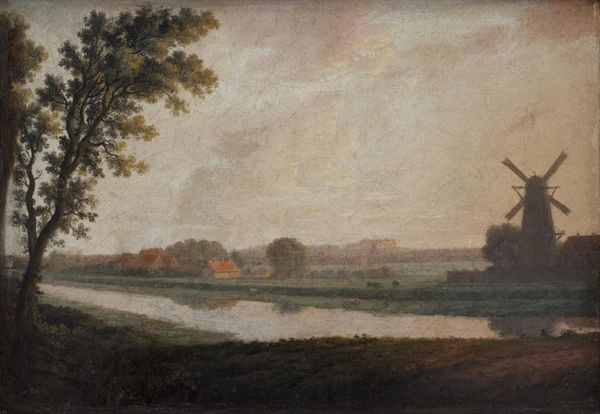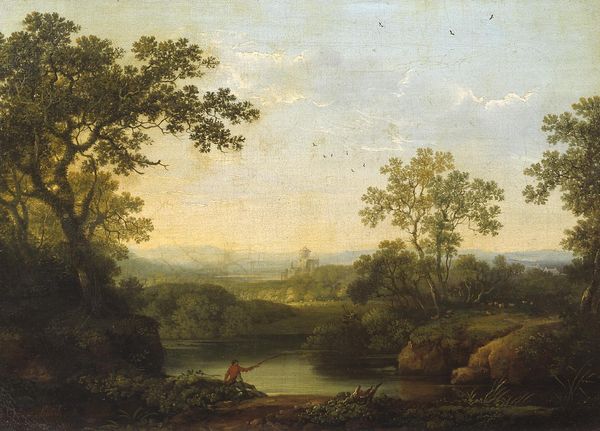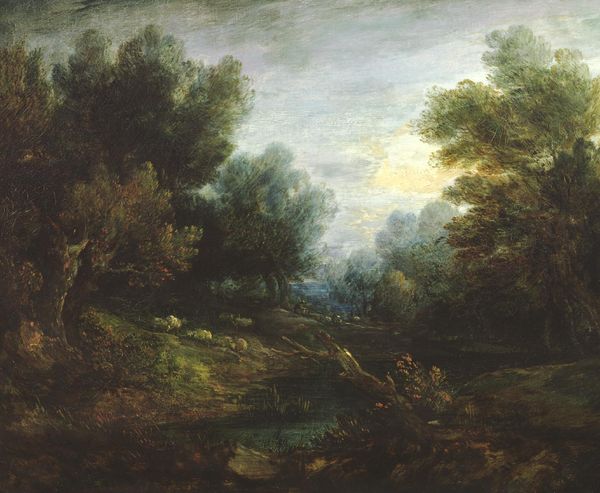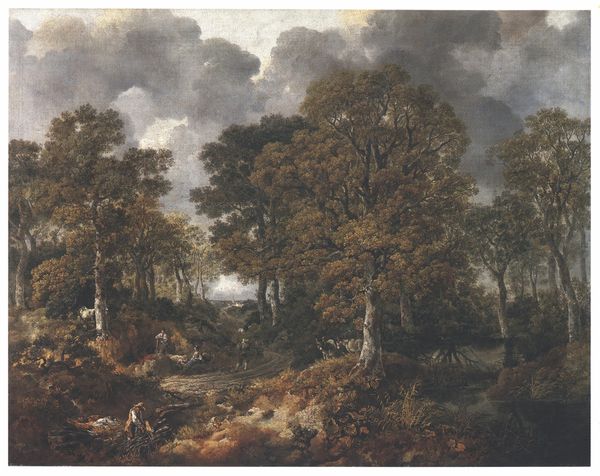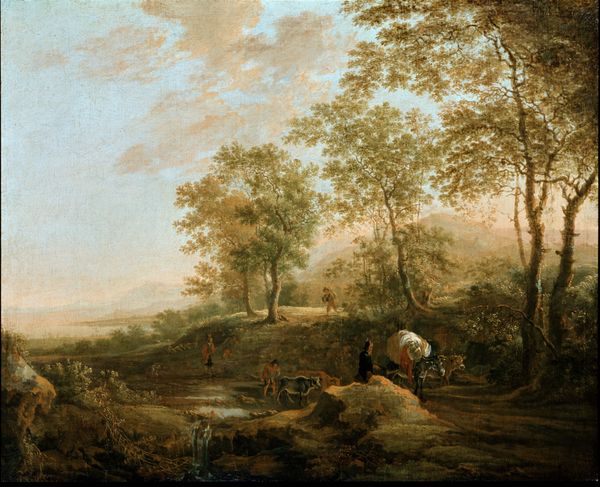
Dimensions: 166 cm (height) x 198.8 cm (width) (Netto)
Curator: Johann Friedrich Weitsch's 1786 oil on canvas, titled "Oak Wood", presents a captivating landscape study. Editor: My first impression is of a quiet, almost solemn place. The dense trees and muted colours give it a really contemplative mood. Curator: The subdued palette certainly evokes a specific emotional register. It's fascinating how Weitsch uses this, combined with the details of everyday rural life, to address complex ideas around nature and national identity. Editor: It’s intriguing. I'm wondering about the actual location he chose. I mean, were oaks so prevalent? And what did they represent to people making a living off the land back then? Curator: That's crucial to understanding it. Oak trees had a deeply embedded cultural symbolism, representing strength, resilience and rootedness within the Germanic tradition. The painting becomes a commentary on the pastoral idyll within evolving political contexts. Editor: Exactly! So how much is a romanticized view and how much stems from real agrarian struggles or the material needs driving these communities to live there. Weitsch is careful with detail—you can see the individual markings of the animals and workers among them, but how much is aestheticizing poverty? Curator: That intersection of the ideal and real is absolutely central. This reflects larger societal concerns around social class, national belonging, and who gets to partake in defining 'German' identity, then. Editor: Right! And in a way, even the technique reflects this tension: you’ve got a highly skilled application of paint to create the depth of field, and an amazing eye for the nuances of texture that capture light filtered by these gigantic oaks. Curator: I appreciate how it opens up questions about what national identity looked and felt like during a period of profound societal change, challenging narratives around gender and class power, who gets included and excluded. Editor: It’s that connection to place and lived reality. This piece certainly gets me thinking about our evolving relationships with our physical surroundings, and also the value of these types of resources. Curator: I agree. Looking closely allows us to reflect critically on the stories these materials silently hold.
Comments
No comments
Be the first to comment and join the conversation on the ultimate creative platform.

